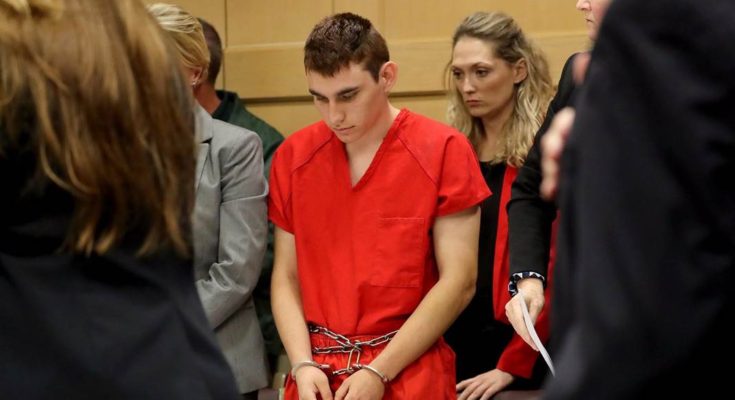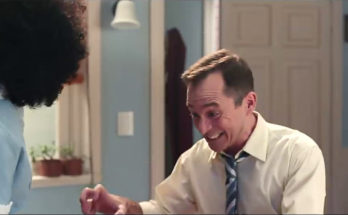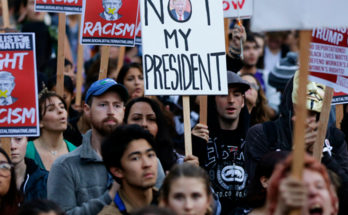I don’t care for guns. I’ve never owned one. I lost interest in guns as a male child about the same age we all stopped making dick jokes about one another in front of the girls. I understand their archetypal power, but the allure never stuck with me. As for self-defense, I’ve benefitted from being a broke looking stocky guy; predators have passed me over. I can’t speak to people who feel the desire to own guns for self-protection. I once lived in a urban wasteland littered with Jamaican drug gangs. They traveled in packs and carried unusually heavy weapons. I surmised if it ever came to it, my lone pistol would more likely cause my death than save my life against six wired Kingston natives with uzis. The minute I had a family, I moved them to an area where the violent crime rates didn’t crack the U.S. Top 100.
Roughly forty percent of U.S. households own a gun. At one time that number was closer to one-hundred percent. There are to this day countries with near one-hundred percent gun ownership and relatively low levels of civil violence. America has always been a gun country. There’s nothing in the cultural zeitgeist to suggest that’s going to change. That seems okay because there’s no research to suggest that violent crime and homicides would drop if we substantially reduced lawful gun ownership. We had a national assault weapons ban for many years and nada. Total gun deaths each year presumably would be less if we Draconian’d up a massive gun confiscation, but probably on the margins. The Prohibition on Drugs proved disastrous and largely abandoned in modern times. The expected results from a government trying to outlaw things that lots of people want very badly. The price goes up, violence escalates, and ultimately more minorities end up dead or in prison. Revisit crack in the 80’s for a solid example. Violent street gangs sell two things: drugs and guns. Affluent white people will be okay. Until they get shot at school.
Heavy body count school massacres are necessarily connected to guns. That’s a hard logic to overlook. You simply can’t do the same damage in England or Australia with a pocket knife or ball pean, though some jihadists have figure out how to use cars rather effectively as weapons of gun-like level destruction. If you believe that legislative action would make it nearly impossible for crazed teen males to shoot other people, you should probably keep screaming thusly. It seems far fetched, but so does holding hands across America and I do believe one time we figuratively accomplished that.
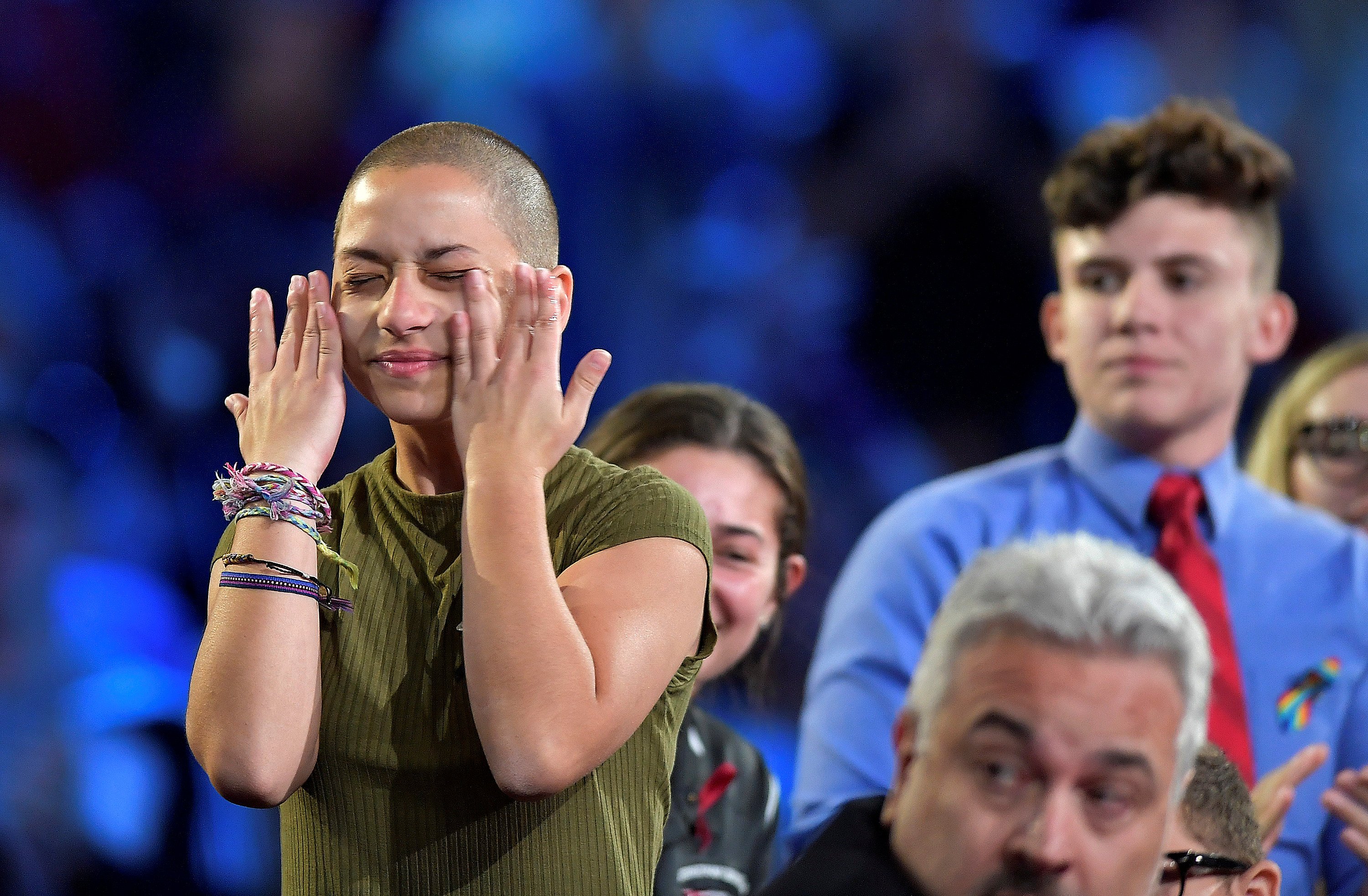
Rational discussion on highly emotional topics remains a challenge. Partisan and ratings hungry news media outlets insist that finding representatives of the extremes of any issue and having them yell at each other on television is a solid form of intellectual discourse. It is a solid way to bump your Nielsens. Following up with heated analysis on parsed quotes seals the clicks and inflames the passions to the point that almost nobody is able to honestly debate a topic such a guns and school shootings. Except for me. I love the facts. More than guns or scoring points on social media with hashtags.
It’s impossible to properly react while in the process of overreacting. Under-reacting has its downsides too, though typically sloths fare reasonably well. School shootings are hard to swallow. And not merely because they tend to take place in white suburban schools where the news media knows it has a winner story. The Chicago Tribune reported that 1,607 kids under the age of 17 were shot in Chicago-land violence between 2011 and 2016 and it did not merit a national Town Hall, two weeks of blanket coverage, or trending hashtags. There’s clearly more national outrage over dead or missing or assaulted white kids. It’s either racism or economics or likely a combination of both. Though that doesn’t and shouldn’t make the gunning down of innocent white teens in their high schools any less worthy of outcry and horror. There is no practical use for moral relativism when it comes to murdered children.
By definition, you can’t make an informed decision without being informed. Even if you are moved by passion, because you’re human, and all that, it’s worth knowing the facts before choosing to ignore them. As a big for instance in relation to the Parkland, Florida high school shooting — violent crime and serious violent crimes in schools have been decreasing in schools steadily and consistently for the past twenty years. These are government numbers.
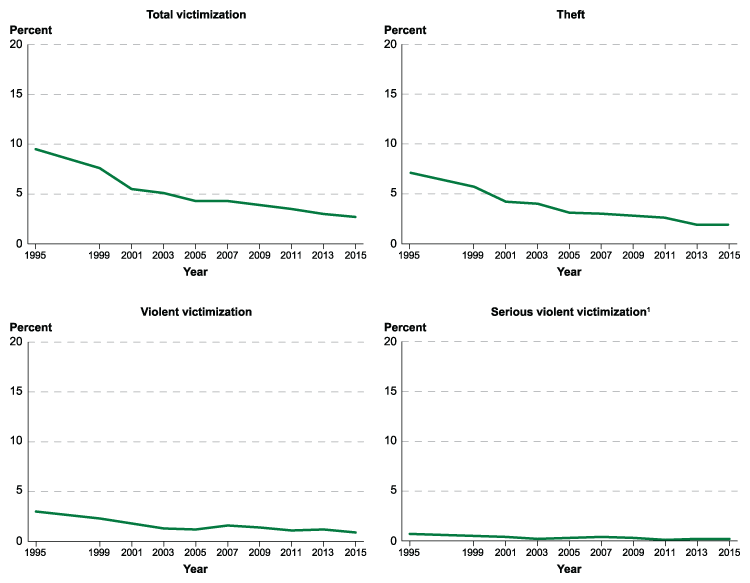
Not that federal bureaus are always accurate or unbiased in their figures reporting, but they are far more so than your average partisan or agenda rights groups compiling similar reports (here’s an example in an article from Time highlighting a gun control advocacy group’s numbers, far afield thanks to numbers jiggering). Federal numbers are the most accurate because they are not compiled by local mayors and police chiefs running for office. Just boring civil servants collecting data to fill their binders. Nobody has perfect numbers. These are the best.
The USA Today recently had the temerity to post a guest piece on the overblown media reporting on school shootings in the nation compared to the relative death count. Though the news outlet barely promoted the piece by the Criminology Professor from Northeastern University. Presume for a moment this tenured criminology professor guy knows more about the crime stats than you. As backed up by numerous sources, and in stark contrast to reports put out by political organizations, the professor notes 22 school shootings in the U.S. since 1992. These are school shootings that take the lives of more than two victims or multiple homicides. Numerous policy and partisan groups have listed these same numbers as in the several hundred. They’re stretching the stats dramatically to feed their narrative. You may agree with their narrative, but you shouldn’t agree with lying to win serious arguments. Not if you want to be taken seriously.
22 multiple student shootings equates to less than one per year on average. These events are rare and anomalous enough to to the point that we can mostly name these events. Jonesboro, Columbine, Newton, Parkland, etc. They tend to happen in bunches as copycat syndrome drives many of these sociopathic young male violent outbursts. Almost all of these acts were inspired by previous school shootings and the quest to be part of the sick legacy. In the wake of the recent Parkland school shooting, there has been more than one thwarted copycat attempt. Think of sick and lonely destructive young men like rappers, trying to claim notoriety titles by boasts on social media and in real life exploits. They’re into one upping each other as their go-to source for perverted expressions of lost masculine accomplishment.
School shootings create so much media buzz that they block out rational inspections of crime stats revealing that American schools are safer than they’ve been in a long time. Though for all the downside of the overhyped coverage of these rare events, they do effectively force elected officials to do something, which has led to some semi-useful security protocols. The Parkland, Florida shooter was properly handled by the front end of the new safety systems in place to prevent disgruntled loners from shooting up schools. He was identified, reported on, expelled from school, and labeled as a danger. The fact that law enforcement agencies up and down the chain failed to complete their end of the process shouldn’t entire overshadow the fact that a reasonable new preventative measure was in place and kind of worked.

The professor in the U.S. Today opinion piece compares kids being shot in these rare massacres to the number of kids killed riding their bikes to school each year. Obviously, the bike riding deaths leads in numbers. It’s a silly metaphor, but meant to help relay that your kid inside a high school has a one in a thousand chance of ever being the victim of violence at school. If you account for disparities between schools in neighborhoods with generally higher violent crime rates, i.e. gangs, versus those without, your kid in a reasonably functional neighborhood is highly likely to never be a victim of violence while attending school. Unless they draw that, on average, one school a year where a kid let’s loose with his dreams of gory revenge. There are 36,000 or so high schools in the U.S.. It remains an incredibly unlikely occurrence.
The bike riding death anomaly is silly, but drunk driving for teens isn’t. Drunk driving accounts for 60% of the several thousand teen auto accident deaths each year? Factually speaking, dead is dead. Flying through the windshield of your drunk friend’s car to your death may be less media hyper-reported than taking a bullet from a crazed expelled student, but the results are the same. The difference being that drunk driving is a largely preventable casualty, with the responsibility on the victim themselves for prevention. Don’t drink and drive, don’t drive with those who are drinking, and the odds you’ll be killed from drunk driving drop dramatically.
The same can be said for teen suicide. Did you know it’s on the steady rise in the past decade? Not if you track most large news media outlets. Suicide rises while school violence decreases. You’ve not seen this headline. In 2015, more than 2,000 high school students killed themselves (with a great number more attempting but failing suicide), largely male. If you dissect school shootings pathologically, they are largely massive spectacle suicides. In that same year, 2015, more than 700 high school aged kids died from drug overdose. That seems like a problem. It’s not that it’s not being addressed. It’s simply not capturing the attention of a nation. Worth noting that in 2015, not a single K-12 student was murdered in a school shooting.

Almost every single student is far safer statistically in school than when not in school. Much as with airline crash stats, you’re far more likely to die traveling to and from the airport than while flying 500mph on the plane at 35,000 feet. Every year one kid on average dies playing Little League baseball. More people die from lightning strikes than school shootings. In 2015, when zero high school students were murdered in school shootings, 13 high school kids died playing football.
The point is not to diminish tragedies, the point is to make decisions with facts. Politicians move almost entirely on public sentiment. Though they shouldn’t. The people who swore some kind of unofficial oath to report, investigate, or communicate to an audience news and information, owe the world more. It would be incredibly helpful if there was accuracy, context, and some overarching commitment to the truth. The broken clock is right twice a day framework is no way to shape important public policy.
Not only is school violence on a steady, long-term decline, violent crime in the U.S. is trending materially and steadily down. Within that stat, sexual assault crimes are dramatically waning. According to the government’s Bureau of Justice Statistics, sexual crimes against women dropped a massive 60% in the years 1995-2010. Congratulations, you alone among your social circle now know this number. A combination of stiffer penal enforcement, arrests, sentencing, and public awareness have helped dramatically reduce these crimes.
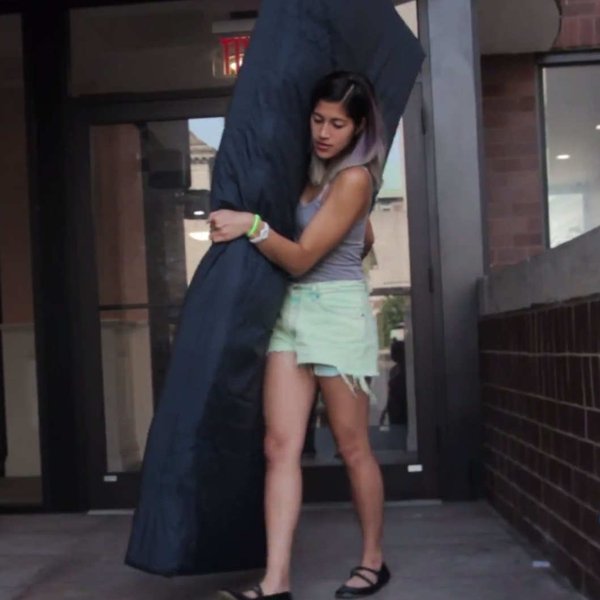
You wouldn’t know any of these fact from political rhetoric, supported by interest groups, backed up by a blindly supportive media culture, that has led to public and social policy based on false stats and false narratives. At one point, the Obama Administration publicized that 25% of college women were being sexually assaulted on campuses. Even the rather progressive Daily Beast felt obliged to provide a factual based rebuttal. Still, the President’s administration rewrote the Title IX enforcement process to encourage schools to move to a guilty until proven innocent stance on sex crime allegations. The result was the improper destruction of numerous male college students lives and reputations, lawsuits against the schools for following such a kangaroo court policy, and ultimately a schools-are-now-law-enforcement process that led to Larry Nassar and multiple student sex criminals being shielded by Michigan State University. You put the schools in charge of a witch hunt, and they will burn some witches. Also, they will find exceptions for their valued sports programs.
The concern from Parkland isn’t the destruction of 2nd Amendment rights. Legislation in that regard will be ultimately tested out by the courts. There will be no general disarming of the American populace. Restrictions may cause gunsto become more expensive to purchase, as cocaine did during the Reagan administration after crackdowns. They will still be available to anybody hellbent on destruction and undeterred by authorities. With similar certainty, there will be a further dividing of the nation into political tribal warfare, pushed along by a money-hungry news media and some relatively small number of people who personally benefit from such animus. Developing practical solutions to prevent future school shootings will only become that much more difficult, and those kids in Chicago will still be dying in great numbers without anybody giving a damn.
Now you know the facts. These terrible words facts be. Do with them as you please.

